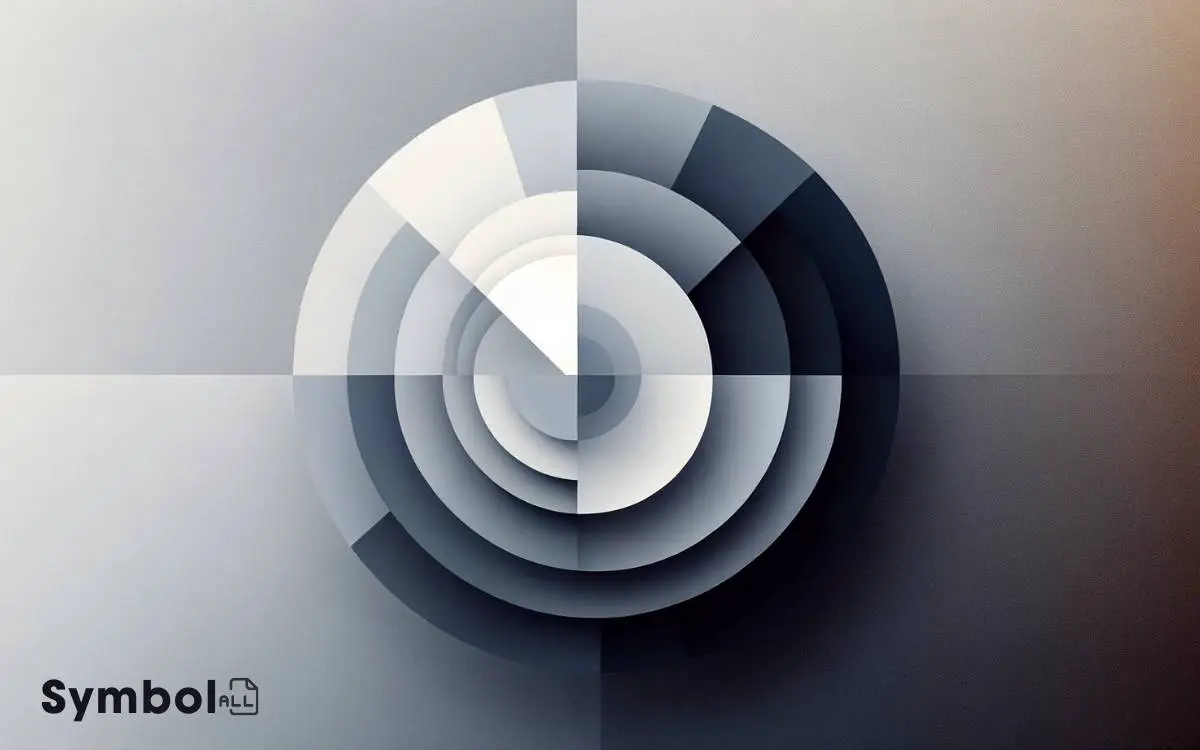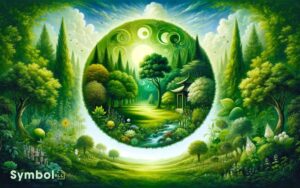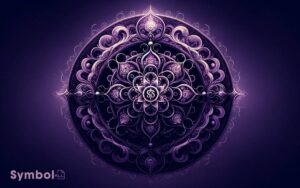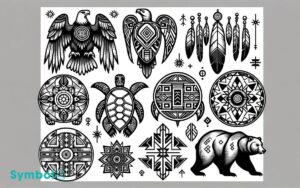What Does the Color Gray Symbolize? Find Out Here!
The color gray symbolizes neutrality and balance, offering a middle ground that embodies maturity, reliability, and wisdom. It represents the complexity of life’s shades, inviting you to look beyond surface meanings and appreciate the depth of insight.
Gray acts as a mediator, harmonizing extremes and creating a neutral mood for stability. It’s pivotal in design for achieving balance and emphasizes the importance of compromise and understanding.
Gray carries diverse meanings across cultures, varying from neutrality and balance to wisdom and humility. Exploring gray’s spectrum further reveals its rich layers and profound significance.

Key Takeaway
The Essence of Gray
Gray embodies a complex interplay of neutrality and balance, offering a nuanced perspective that transcends mere color theory.
You’ll find it doesn’t shout for attention, yet it holds depth, embodying maturity, reliability, and wisdom.
Its presence suggests a departure from the starkness of black and white, introducing a middle ground that fosters compromise and understanding.
In cultural contexts, gray can symbolize the undefined, the intermediary, the space between the known and the unknown. It’s neither dark nor light but a mediator, hinting at the complexity of life‘s myriad shades.
This subtlety invites introspection, urging you to look beyond the surface to uncover the layers of meaning it conceals. Ultimately, gray isn’t just a color; it’s a reflection of life’s intricate balance.
Balancing Act
You’ve seen how gray embodies the essence of neutrality, but its true power lies in its role as a mediator.
It finds harmony between extremes, creating a neutral mood that neither overwhelms nor underwhelms.
This balancing act offers stability through color, grounding more vibrant or darker shades and fostering a sense of equilibrium.
Harmony Between Extremes
While often overlooked, the color gray embodies a unique equilibrium, seamlessly bridging the gap between the polar opposites of black and white. You’ll find that this balancing act isn’t just about aesthetics; it’s deeply symbolic.
Here are four ways gray represents harmony between extremes:
- Merging Ideals: Gray symbolizes the merging of contrasting ideologies, suggesting a middle ground where differences can coexist.
- Emotional Stability: It signifies emotional stability, blending the starkness of despair with the purity of joy.
- Compromise and Diplomacy: In negotiations or discussions, gray is the color of compromise, promoting diplomacy over division.
- Intellectual Balance: Gray encourages a balance between knowledge and ignorance, recognizing the value in understanding both sides of an argument.
Neutral Mood Creation
Building on its role as a mediator between extremes, gray also plays a key part in establishing a neutral mood, acting as a balancing act in various contexts.
This hue’s inherent neutrality means it doesn’t provoke strong emotions or overpowering reactions. Instead, it facilitates an environment where other elements can stand out or blend harmoniously.
Stability Through Color
Utilizing the flexibility of gray can greatly contribute to the creation of stable, balanced environments, serving as a visual anchor that mitigates the potential for discord.
When you’re aiming for equilibrium in design or personal expression, consider how gray acts as a balancing force:
- Harmonizes Extremes: Gray tones down bright colors and illuminates darker shades, forging a cohesive palette.
- Emphasizes Subtlety: It encourages appreciation for nuanced details often overlooked in more vibrant settings.
- Symbolizes Solidity: Gray conveys reliability and endurance, suggesting a foundation that withstands trends and time.
- Promotes Calmness: Its presence instills a sense of calm, making it ideal for spaces intended for relaxation or concentration.
Neutrality in Design
In considering the color gray’s role in neutrality in design, you’ll find it’s pivotal in achieving balance among visual elements. Its capacity to minimize emotional impact allows for a more objective user experience.
Additionally, gray’s versatility in application proves essential for designers seeking a universally appealing aesthetic.
Balance in Visual Elements
Grey plays a crucial role in achieving balance within visual designs, offering a neutral ground that enhances the cohesiveness of other colors.
When integrating gray into your design, recognizing its role in:
- Creating Harmony: Grey can bridge contrasting elements, softening the visual impact of bolder colors and fostering a harmonious layout.
- Emphasizing Texture: In minimalist designs, grey highlights texture and form without overwhelming the viewer with color.
- Guiding Focus: By utilizing grey as a background or secondary color, you direct attention towards key features or vibrant hues.
- Enhancing Versatility: Grey’s adaptability allows it to seamlessly fit into various design themes, making it a go-to for achieving balance and neutrality.
Emotional Impact Minimization
By minimizing emotional impact, designers often turn to gray for its ability to introduce neutrality into their creations, ensuring the viewer’s focus remains on the intended message rather than being swayed by color-associated emotions.
This strategic use of gray strips away the potential for emotional bias, allowing for a more pure reception of the design’s message or functionality.
It’s a thoughtful choice in areas where emotional influence needs to be carefully controlled or minimized, such as in user interface design, where too much color can distract or mislead.
Gray’s subtlety offers a blank canvas, enabling other elements to stand out without competition. This deliberate decision underscores the importance of color psychology in design, highlighting how the absence of color can be as powerful as its presence.
Versatility in Application
Building on its ability to minimize emotional impact, gray’s neutrality proves incredibly versatile in design, accommodating a wide array of applications without influencing the user’s perception.
This versatility is evident in various design domains, making gray a go-to color for designers seeking to achieve balance and subtlety.
Here’s how:
- Interior Design: It serves as a perfect backdrop, allowing other colors to pop or providing a calming, minimalist aesthetic.
- Web Design: Gray tones can create a sleek, modern look, enhancing usability without overwhelming with color.
- Fashion: It offers a sophisticated, timeless base that can be easily paired with any color for a range of styles.
- Branding: In logos and branding, gray communicates professionalism and neutrality, making it ideal for businesses aiming to convey reliability and balance.
Gray’s adaptability in design underscores its role as a foundational element that enhances and complements, rather than detracts or dominates.
Symbol of Wisdom
In the domain of symbolic meanings, gray often represents wisdom, denoting a balance between knowledge and understanding that transcends mere accumulation of facts.
When you encounter gray, it’s not just about having information; it’s about the depth of insight and the ability to apply knowledge judiciously.
Gray’s essence in wisdom symbolism lies in its position as the mediator between the extremes of black and white, symbolizing a thoughtful consideration that involves seeing beyond the surface.
This color suggests a nuanced perspective that appreciates complexity without being overwhelmed by it.
It’s about the wisdom that comes with experience, where decisions are informed by a thorough understanding rather than a knee-jerk reaction.
Gray embodies the wisdom that acknowledges shades of truth in a world that often prefers absolutes.
Embodying Maturity
Reflecting on gray’s symbolism in wisdom, it’s natural to ponder how this color also signifies maturity, embodying a sophistication and depth of experience that goes beyond years.
Gray’s nuanced tones capture the essence of maturity in several ways:
- Balance: It represents the equilibrium between youthful impulsivity and the restraint often associated with age.
- Dignity: Gray carries an inherent dignity, suggesting a person who’s lived through various experiences and emerged with grace.
- Adaptability: Much like adapting to life’s ups and downs, gray’s versatility symbolizes the ability to navigate complex situations with ease.
- Timelessness: It transcends fleeting trends, embodying qualities that endure beyond the momentary.
In essence, gray paints a picture of maturity as not just aging but evolving with wisdom and grace.
A Calming Influence
Gray’s soothing presence often serves as a tranquil backdrop, subtly influencing emotions and creating a serene atmosphere.
This color doesn’t demand attention but rather, it offers a quiet moment of reflection and pause in a world that’s often saturated with brighter, more demanding hues.
You’ll find that gray’s impact on your mood is distinctly calming, inviting you to slow down and breathe in a space that feels safe and undisturbed.
Its ability to fade into the background makes it an ideal choice for spaces where peace and quiet are cherished.
Analyzing gray’s role in design and aesthetics reveals its unique power to harmonize, offering a visual breather that’s deeply appreciated in both personal and public spaces. Its understated elegance is a reflection of its calming influence.
Stability Amidst Change
Amid shifting landscapes, the color gray stands as a beacon of stability, offering a sense of continuity in times of change.
This neutrality and balance inherent in gray provide you with a foundation upon which complexity and transformation can more comfortably rest.
Consider the following:
- Gray as a Mediator: It bridges the gap between extremes, embodying compromise and adaptability.
- Symbol of Resilience: Gray’s enduring nature symbolizes one’s ability to weather storms and emerge unscathed.
- Versatility in Application: It’s a color that can fit any context, signaling its capacity to remain relevant and steady.
- Consistency Over Time: Despite trend cycles, gray maintains its significance, reflecting a timeless quality that reassures you amidst change.
Analyzing gray in this light, you grasp its subtle but powerful role in providing stability.
Gray and Modernity
In the domain of modern design, gray has emerged as a cornerstone, seamlessly embodying both sophistication and the ever-evolving aesthetic of the contemporary era.
This color’s neutrality offers a canvas for innovation, allowing other elements to shine while it provides a subdued backdrop.
You’ll find gray in cutting-edge architecture, where it conveys sleekness and an industrial vibe that’s both timeless and forward-looking. It’s in the minimalistic decor, where simplicity and functionality reign.
Gray’s versatility bridges traditional and futuristic, suggesting that modernity isn’t just about embracing the new but also about redefining the familiar.
As you explore modern spaces and concepts, gray stands as a confirmation to the balance between innovation and elegance, proving that true modernity lies in harmony rather than contrast.
Loss and Melancholy
In exploring the symbolism of gray, you’ll find it intricately linked to the grieving process and emotional depth.
Gray embodies the complex emotions tied to loss and melancholy, serving as a visual representation of the inner turmoil experienced during these times.
This color’s neutrality offers a canvas for the exploration of these profound emotional landscapes, inviting a deeper understanding of their impact.
Grieving Process
The color gray often embodies the complex emotions associated with the grieving process, reflecting the ambiguity and numbness felt in times of loss and melancholy.
When you’re maneuvering through this tumultuous period, gray symbolizes several key aspects:
- Ambiguity: It captures the unclear path from grief back to normalcy, where emotions aren’t black or white.
- Transition: Gray represents the in-between state, not fully immersed in despair but not yet finding closure.
- Numbness: It mirrors the emotional detachment often experienced during grieving, a protective mechanism against overwhelming sorrow.
- Universality: Grieving is a universal experience, and gray’s neutrality and commonality reflect this shared human condition.
Understanding these facets helps you appreciate why gray resonates deeply during periods of mourning and melancholy.
Emotional Depth
Gray’s capacity to encapsulate the profound emotional depth of loss and melancholy offers a unique lens through which one can explore these complex feelings.
It’s a color that doesn’t scream its presence but rather whispers, enabling a subtle yet intense exploration of sorrow and introspection.
You’ll find that gray doesn’t overshadow other emotions; instead, it provides a backdrop that allows the vibrancy of life’s joys and sorrows to stand out. Its neutrality acts as a canvas, reflecting the myriad emotions that accompany loss and melancholy.
This quality of gray, to be present without overwhelming, makes it a powerful symbol for those traversing the nuanced pathways of grief. It’s a proof of how essential understated support can be during emotionally turbulent times.
The Ambiguity of Gray
Why does gray often elicit such mixed feelings, oscillating between the serene and the somber? The ambiguity of gray lies in its inherent neutrality, making it a canvas for a variety of interpretations.
Consider the following:
- Gray as a mediator: It bridges the stark contrast between black and white, embodying compromise and balance.
- Gray’s association with fog and mist: It symbolizes the unclear, the uncertain, and the transient.
- Gray in nature: It’s often seen in storms, evoking a sense of impending change or turmoil.
- Gray’s versatility: It can both stand out and recede into the background, depending on its context.
This complexity allows gray to be both grounding and elusive, weaving a tapestry of meanings that’s as rich as it’s varied.
Gray in Fashion
Reflecting on its multifaceted symbolism, you’ll find that gray’s role in fashion embodies a nuanced spectrum of meanings, from understated elegance to avant-garde boldness.
This color’s versatility allows it to serve as a neutral backdrop that highlights other hues or, conversely, as a statement shade that exudes sophistication.
Designers leverage gray’s adaptability to create pieces that transcend seasonal trends, offering longevity and timeless appeal in wardrobes.
Additionally, its wide range of shades, from pale silvers to deep charcoals, provides endless possibilities for self-expression.
In the world of fashion, gray stands not just as a color but as a canvas, inviting creativity and personal interpretation.
It’s this depth and flexibility that cement gray’s esteemed position in the sartorial world.
Reliability and Trust
Delving into the psychological domain, it’s apparent that gray often symbolizes reliability and trust, anchoring its significance in both personal relationships and professional environments.
This color conveys a sense of stability and dependability that’s important in forming and maintaining trust.
Consider the following points:
- Neutral Ground: Gray acts as a neutral backdrop, promoting open communication and mutual understanding.
- Professionalism: In corporate settings, gray communicates professionalism and reliability, making it a preferred choice for business attire and design.
- Emotional Balance: It suggests a balanced emotion, neither too intense nor too detached, fostering a trustworthy ambiance.
- Timelessness: Gray’s association with timelessness and durability reinforces its symbolism as a reliable and enduring presence.
Understanding gray’s role in symbolizing reliability and trust offers valuable insights into its psychological impacts and practical applications.
Gray in Nature
In the natural world, gray manifests in myriad forms, serving as a subtle yet profound reminder of the earth’s complex beauty and resilience.
You’ll find it in the silent strength of stones, weathered yet unwavering, and in the feathers of birds, blending seamlessly into the overcast sky. It’s in the fur of animals, a demonstration to their adaptability and survival instincts.
Even the sky itself, before a storm or in the calm of dawn, showcases shades of gray, reflecting the world’s ever-changing moods and emotions.
This color, often overlooked, plays a critical role in nature’s palette, offering balance and contrast that enhance the vibrancy of surrounding colors. It’s a symbol of the natural balance, highlighting the importance of diversity and adaptation in the ecosystem.
Cultural Interpretations
You’ll find that gray’s symbolism isn’t static across cultures; it varies greatly, indicating a rich tapestry of global interpretations.
Spiritual meanings attached to gray also differ, reflecting diverse beliefs and traditions around the world.
Additionally, artists worldwide have leveraged gray’s unique qualities, embedding it with various symbolic significances in their works.
Global Symbolism Variations
Across cultures, the color gray carries diverse and sometimes contradictory meanings, shaped by historical, geographical, and societal influences.
Here’s a glimpse into how different cultures interpret gray:
- In Western societies, gray often symbolizes neutrality and balance, reflecting its position between black and white. It’s associated with practicality and timelessness.
- Eastern cultures might see gray as a color of mourning and loss, but also wisdom and respect, particularly among the elderly.
- In some African cultures, gray can symbolize healing and cleansing, as it’s seen in the color of rain clouds bringing much-needed water to the earth.
- In Scandinavian countries, gray’s simplicity and understated elegance align with minimalist design principles, symbolizing modernity and sophistication.
These variations underline gray’s multifaceted symbolism, which transcends universal interpretation.
Spiritual Meanings Attached
Delving into the spiritual domain, gray’s symbolism offers a rich tapestry of meanings that reflect deeply held beliefs and practices among various cultures. Delving into the spiritual domain, gray’s symbolism offers a rich tapestry of meanings that reflect deeply held beliefs and practices among various cultures. Often seen as the bridge between black and white, gray embodies balance, neutrality, and the complexities of life’s dualities. Similarly, the color black symbolism in the Bible carries profound interpretations, frequently associated with mystery, humility, and the somber realities of human existence. Together, these hues invite introspection and a deeper understanding of spiritual truths across diverse perspectives.
In some traditions, gray represents neutrality and balance, embodying the state of being neither dark nor light, but somewhere in between.
This middle ground is often viewed as a space of change, symbolizing the journey between life and death, or the domain of spirits and ancestors.
Additionally, gray can signify wisdom and humility, traits highly valued in spiritual contexts. It’s seen as the color of sage advice, where knowledge is tempered by understanding the complexity of life.
You’re invited to see gray not just as a color but as a bridge between worlds, carrying messages of harmony and understanding.
Artistic Representations Worldwide
Investigating the domain of art, it’s clear that gray’s symbolism resonates deeply within cultural interpretations, offering a nuanced perspective on its use and significance.
- In Japanese ink wash paintings, gray’s gradients capture the impermanence and subtlety of life, embodying the philosophy of wabi-sabi.
- European Renaissance art utilizes gray for its neutrality, creating depth and volume in sculptures and paintings, highlighting the era’s pursuit of realism.
- Modern and contemporary art often sees gray as a medium of expression for ambiguity and the complexities of the modern condition, challenging viewers’ perceptions.
- In Indigenous Australian art, shades of gray in bark paintings and rock art symbolize the connection between the physical and spiritual worlds, illustrating stories and lore deeply rooted in the landscape.
This diversity in usage underscores gray’s versatile symbolism across cultures, reflecting a range of emotions, philosophies, and narratives.
Conclusion
So, you’ve wandered through the misty domains of gray, uncovering its eerie ability to be everything and nothing, all at once.
You’ve seen it balance the universe like an overachieving tightrope walker, embody wisdom without uttering a word, and strut in style with the subtlety of a ninja at a rave.
Gray, in its understated grandeur, whispers tales of dependability, wraps maturity around its finger, and winks at nature with a sly grin.
As you contemplate its cultural cloaks, remember, gray isn’t just a hue—it’s the universe’s way of saying, ‘Let’s not make things too vibrant.’






